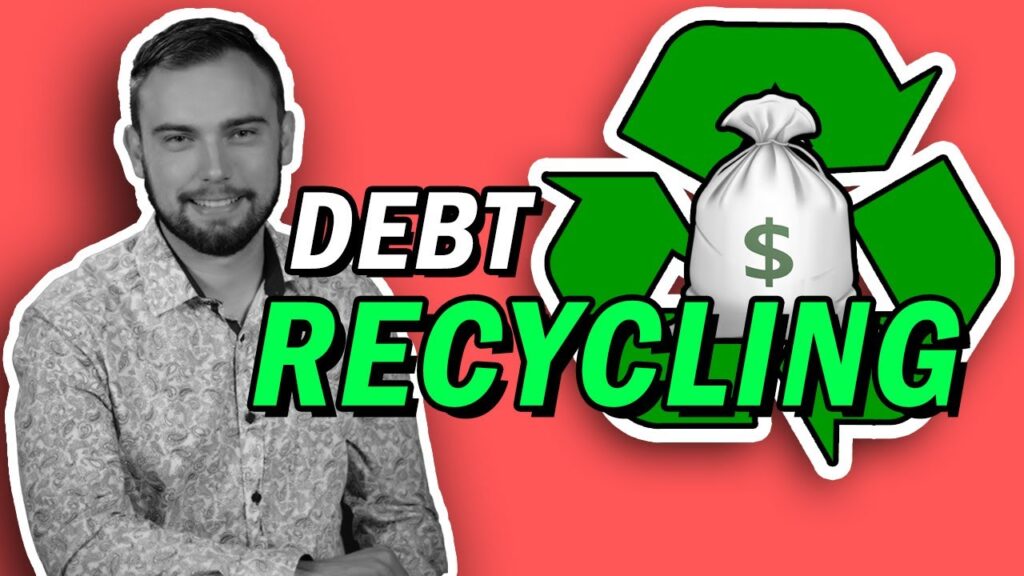Debt recycling is a concept that has gained popularity in recent years as individuals seek to transform their financial situations and build wealth. By understanding the basics of debt recycling, learning the benefits and risks involved, and implementing financial discipline, anyone can embark on a journey towards financial transformation. In this article, we will explore the process of debt recycling, the role of financial discipline, strategies for successful debt recycling, and the long-term effects it can have on wealth accumulation and financial security.
Understanding the Concept of Debt Recycling
The Basics of Debt Recycling
Debt recycling is a proactive financial strategy that involves replacing non-deductible debt, such as credit card debt or personal loans, with tax-deductible debt, such as investment loans or a mortgage redraw facility, this is how does debt recycling work. The aim is to utilize the tax benefits associated with the deductible debt to accelerate wealth creation and achieve financial goals.
By leveraging tax-deductible debt, individuals can potentially increase their after-tax income and investment returns. This strategy involves using the equity in existing properties or investments to fund new investments, creating a cycle where debt is continually recycled to generate wealth over time. Debt recycling is often seen as a way to make debt work for you, rather than against you.
The Benefits and Risks of Debt Recycling
There are several benefits to debt recycling. Firstly, it allows individuals to maximize their tax deductions by redirecting non-deductible debt towards investment-related expenses. Secondly, it can result in long-term interest savings, as investment loans typically have lower interest rates compared to consumer loans. Thirdly, debt recycling enables individuals to build an investment portfolio over time, ultimately leading to greater wealth accumulation.
Moreover, debt recycling can provide individuals with a sense of financial security and independence. By strategically managing their debts and investments, individuals can create a diversified portfolio that helps spread risk and potentially increase returns. This approach can also lead to a more disciplined approach to financial planning and decision-making, fostering a long-term mindset towards wealth creation.
However, it is important to consider the risks of debt recycling. One key risk is the potential for investment losses. Investing in the market can be volatile, and individuals must carefully research and diversify their investments to mitigate this risk. Additionally, debt recycling may not be suitable for everyone, particularly those with unstable income or high levels of existing debt.
The Process of Debt Recycling
Debt recycling is a strategic financial approach that involves several key steps to maximize wealth creation and tax efficiency. The process begins with a comprehensive assessment of one’s financial landscape, encompassing income sources, expenditure patterns, and existing debt obligations. This initial evaluation serves as the foundation for determining the feasibility of debt recycling as a wealth-building strategy.
Following the financial assessment, individuals embark on the crucial task of identifying investment avenues that are not only aligned with their financial objectives but also complement their risk appetite. By carefully selecting suitable investment opportunities, individuals can lay the groundwork for the subsequent stages of debt recycling.
Once the investment portfolio is established, the next step in the debt recycling process involves the conversion of non-deductible debt into deductible debt. This conversion is typically achieved through strategic financial maneuvers such as loan refinancing or restructuring. By leveraging deductible debt, individuals can potentially unlock tax benefits and enhance their overall financial position.
Common Mistakes to Avoid in Debt Recycling
While debt recycling presents a compelling opportunity for wealth accumulation, it is essential to navigate this financial strategy with prudence and foresight to avoid common pitfalls. One prevalent mistake to steer clear of is the oversight of unexpected expenses or market fluctuations. Building a robust emergency fund and accounting for potential investment volatility are integral components of a successful debt recycling strategy.
Another critical misstep to avoid is the temptation of overborrowing or assuming excessive debt burdens. Maintaining a disciplined approach to borrowing, grounded in a realistic assessment of financial capabilities and risk tolerance, is paramount to safeguarding long-term financial stability. Furthermore, individuals should resist the allure of short-term gains and instead prioritize a sustainable, long-term investment outlook when engaging in debt recycling endeavors.

The Role of Financial Discipline in Debt Recycling
Importance of Budgeting and Saving
Financial discipline is a crucial element of successful debt recycling. Budgeting plays a vital role in managing expenses and identifying areas where savings can be made. By creating a budget and regularly tracking expenses, individuals can allocate a portion of their income towards debt repayment and investments.
Saving is another essential aspect of financial discipline. It is important to consistently save a portion of income to build an emergency fund, cater for unexpected expenses, and contribute towards future investments. Saving also provides a buffer against potential risks or financial downturns.
Moreover, budgeting not only helps in managing day-to-day expenses but also enables individuals to set financial goals and work towards achieving them. Whether it’s saving for a down payment on a house, planning for retirement, or funding a child’s education, a well-structured budget can provide a roadmap for reaching these milestones. Additionally, budgeting can reveal areas of overspending or unnecessary expenses, allowing individuals to reallocate those funds towards debt reduction or wealth-building strategies.
The Impact of Financial Literacy
Financial literacy plays a significant role in debt recycling success. Understanding financial concepts, investment strategies, and tax implications empowers individuals to make informed decisions and maximize the benefits of debt recycling. It is essential to continually educate oneself through resources such as books, articles, and professional advice to enhance financial literacy and ensure the best possible outcomes.
Furthermore, being financially literate not only aids in debt recycling but also in overall financial well-being. It equips individuals with the knowledge to navigate complex financial products, evaluate investment opportunities, and plan for long-term financial security. By improving financial literacy, individuals can take control of their financial future and make sound decisions that align with their goals and values.
Strategies for Successful Debt Recycling
Choosing the Right Debt for Recycling
One of the critical strategies in debt recycling is choosing the right debt to recycle. This involves assessing the interest rates, tax deductibility, and potential returns on investment. By selecting debt with favorable terms and aligning it with suitable investment opportunities, individuals can optimize the benefits of debt recycling.
When considering which debt to recycle, it’s important to take into account the long-term implications of each option. For example, high-interest credit card debt may be a priority for repayment due to its compounding nature, while low-interest mortgage debt could be more beneficial to retain for investment purposes. Understanding the nuances of different types of debt can help individuals make informed decisions when embarking on a debt recycling strategy.

Balancing Debt Payments and Investments
Achieving a balance between debt repayments and investments is essential for successful debt recycling. While it is important to minimize non-deductible debt as quickly as possible, it is also crucial to allocate funds towards investments that generate income or appreciate in value. By striking a balance, individuals can gradually reduce debt while building a strong investment portfolio.
Furthermore, when balancing debt payments and investments, individuals should consider their risk tolerance and investment timeline. Diversifying investments across different asset classes can help mitigate risks, while also potentially increasing overall returns. By carefully managing both debt and investment strategies, individuals can work towards long-term financial stability and growth.
The Long-Term Effects of Debt Recycling
Debt Recycling and Wealth Accumulation
Debt recycling, when implemented strategically and coupled with sound investment decisions, can have a substantial impact on long-term wealth accumulation. By redirecting non-deductible debt towards income-producing or appreciating investments, individuals can generate additional income and build a solid foundation for financial growth.
Furthermore, debt recycling can serve as a powerful tool for leveraging assets and maximizing returns. Through careful planning and monitoring of investments, individuals can not only reduce debt but also create a diversified portfolio that can weather market fluctuations and yield long-term financial gains.
Debt Recycling and Financial Security
Financial security is a desired outcome of debt recycling. By managing debt effectively, individuals can reduce financial stress and create a more stable financial future. Debt recycling provides the opportunity to improve cash flow, increase savings, and ultimately achieve financial goals with greater ease.
Moreover, the practice of debt recycling instills financial discipline and cultivates a mindset of proactive wealth management. By actively engaging with financial decisions and seeking opportunities to optimize resources, individuals can develop a robust financial strategy that not only addresses current debt but also paves the way for future financial independence.
In conclusion, debt recycling offers real-life examples of financial transformation for individuals seeking to improve their financial situations. By understanding the concept, following a strategic process, implementing financial discipline, and considering long-term effects, anyone can embark on a successful debt recycling journey. It is crucial to assess individual circumstances, seek professional advice, and continuously educate oneself to ensure the best outcomes. Debt recycling, when executed well, has the potential to truly transform financial futures.
See Also: Key Strategies for Long-Term Growth


